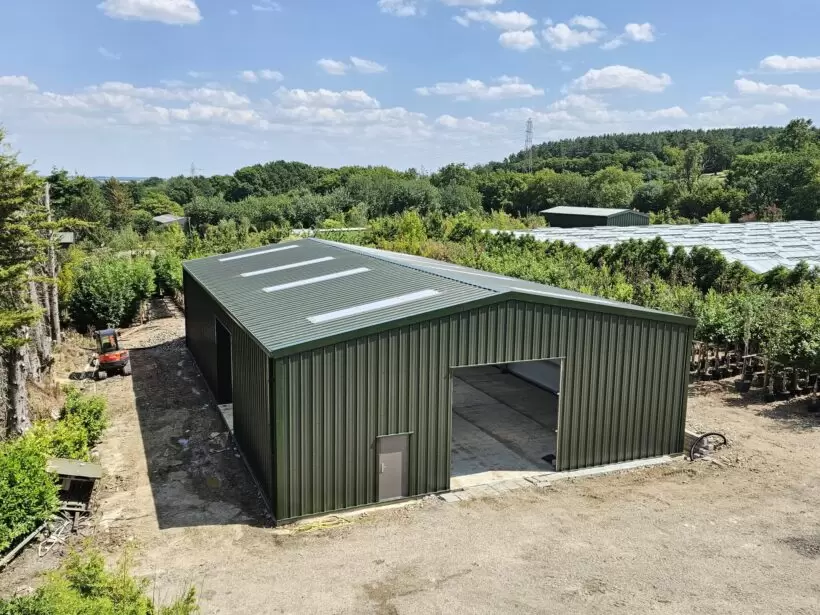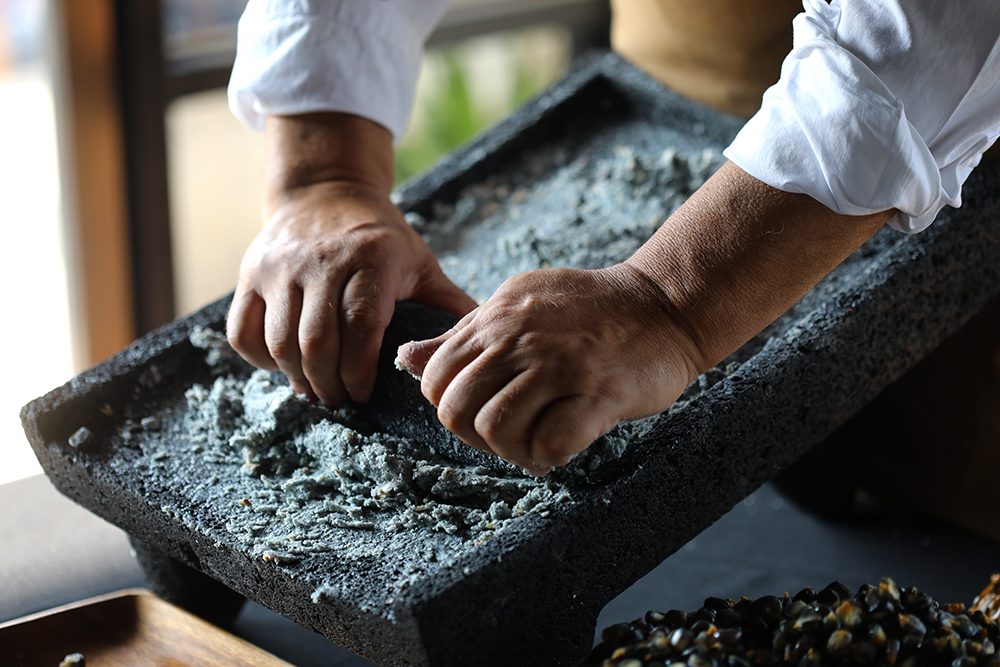The Evolution of Steel Frame Agricultural Buildings
Steel frame agricultural buildings have significantly evolved over the years, revolutionising the way farming structures are designed and constructed. In the past, traditional materials like wood and concrete were commonly used in agricultural building construction. However, the emergence of steel frame buildings has brought about a remarkable shift in the industry.
With advancements in engineering and technology, steel frame agricultural buildings have become the go-to choice for modern farmers and agribusinesses. These structures offer exceptional durability, flexibility, and efficiency, addressing the evolving needs of the agricultural sector.
Advantages of Steel Frame Agricultural Buildings
- Superior Strength and Durability: Steel frame agricultural buildings are known for their exceptional strength and durability, providing robust support for various farming operations and equipment. They can withstand harsh weather conditions, heavy loads, and potential impacts, offering long-term reliability.
- Customisable Design: One of the key advantages of steel frame agricultural buildings is their flexibility in design. They can be tailored to meet specific farm requirements, allowing for adjustable interior layouts, additional storage space, and integration of advanced agricultural technologies.
- Cost-Efficiency: Steel frame buildings offer cost savings in both construction and maintenance. Their longevity and low maintenance requirements make them a financially sound investment for farm owners, reducing long-term operational expenses.
Environmental Benefits of Steel Frame Agricultural Buildings
The zeitgeist of our era leans heavily towards sustainability, and steel frame agricultural buildings are at the vanguard of this green revolution in agrarian architecture. Delving into the environmental benefits of such structures reveals their role in not only elevating the grandeur of rural landscapes but also in their commitment to ecological stewardship.
Steel, as a construction material, is renowned for its durability and recyclability. With a longevity that surpasses traditional building materials, steel frames ensure a reduced frequency of replacement, thus minimising the environmental footprint over time. The high recyclability factor of steel further underscores its sustainability, as it can be repurposed with minimal energy consumption, reducing waste and conserving natural resources.
In addition, the precision engineering of steel frame agricultural buildings translates into enhanced energy efficiency.
The integration of advanced insulation materials with airtight construction techniques fosters a reduction in heating and cooling demands, resulting in a diminution of greenhouse gas emissions.
This synergy of form and function not only consolidates the eco-credentials of such edifices but also provides a pragmatic solution to the challenge of reducing carbon footprints in the agricultural sector.
Customisation and Design Flexibility
The ascendance of steel frame agricultural buildings is not solely attributed to their environmental accolades but also to their superior customisation and design flexibility.
In a world where aesthetic distinction and functional precision are paramount, these structures cater to a vast array of design paradigms, enabling the creation of spaces that are as visually arresting as they are efficacious.
The modularity of steel frames offers the latitude to design expansive, open-plan interiors free from obstructive supporting columns, affording farmers and agronomists the versatility to configure their spaces in accordance with the unique requisites of their operations.
From commodious storage for state-of-the-art machinery to specialised environments for livestock housing, the tailorability factor is immense.
Moreover, the architectural possibilities extend to the exteriors, where steel allows for a diversity in aesthetic expressions. Whether the preference is for sleek, contemporary finesse or rustic charm that dialogues with the pastoral surroundings, steel frame buildings can be clad in a variety of materials and finishes.
This malleability in design not only reflects the evolving tastes and brand identities of luxury agricultural enterprises but also supports a bespoke approach that is the hallmark of distinction.
Durability and Longevity of Steel Frame Agricultural Buildings
Steel frame agricultural buildings are renowned for their exceptional durability and longevity. The use of high-quality steel ensures that these structures can withstand harsh environmental conditions, including heavy snow loads, strong winds, and seismic activity.
The inherent strength of steel makes it resistant to rot, mould, and pests, providing a long-lasting solution for agricultural storage and production needs. Furthermore, steel frame buildings require minimal maintenance compared to traditional wooden structures. They do not warp, twist, or shrink over time, ensuring that the building maintains its structural integrity for decades.
This longevity provides farmers and agricultural businesses with a reliable infrastructure that can support their operations for the long term. In addition, steel is non-combustible, offering superior fire resistance compared to wood.
This not only enhances the safety of the structure but also reduces insurance costs for agricultural property owners. The combination of durability, low maintenance, and fire resistance makes steel frame agricultural buildings a compelling choice for those seeking a reliable and long-lasting agricultural infrastructure.
Cost-Effectiveness and Return on Investment
Investing in steel frame agricultural buildings offers a compelling return on investment. While the initial cost of construction may be higher than traditional materials, such as wood, the long-term cost savings and durability of steel make it a cost-effective choice.
Steel buildings require less maintenance and repair, reducing ongoing expenses for agricultural operations. Additionally, the longevity of steel structures means that they do not need frequent replacement, providing a significant cost advantage over time.
Moreover, the ability to customise steel frame buildings to specific size and functional requirements maximises space utilisation, further enhancing their cost-effectiveness.
Furthermore, the resale value of steel frame agricultural buildings remains high due to their durable nature and low maintenance requirements. This ensures that the initial investment in a steel frame structure can yield substantial returns if the property is sold or repurposed in the future.
Overall, the cost-effectiveness and strong return on investment make steel frame agricultural buildings a compelling choice for agricultural businesses and investors seeking sustainable and reliable infrastructure.
Enhancing Agricultural Operations with Steel Frame Buildings
The resurgence of steel frame agricultural buildings encapsulates engineering brilliance with aesthetic sophistication, precisely what the modern farming infrastructure demands. Far from merely functional, these structures distinguish themselves through versatility and durability, providing an invaluable upgrade to the agrarian landscape.
Within these steel fortresses, efficiency intertwines with elegance as they offer expansive clear-span interiors, unobstructed by supporting columns. This translates into uninterrupted space for machinery storage, livestock housing, or product processing — a testament to the adaptability of steel frame designs.
The bespoke nature of steel construction also means buildings can be tailored to the unique requirements of each agricultural enterprise, seamlessly integrating into existing workflows.
Furthermore, the longevity of steel stands as a bastion against the ravages of time and weather. The evolution of corrosion-resistant coatings and insulation options ensures these buildings can withstand the harshest of elements, safeguarding the investments within. The strength of steel also allows for the addition of solar panels or other sustainable technologies, emblematic of an industry pivoting towards green innovations.
Digitally-aided design and precision manufacturing ensure that these steel frame structures not only meet the exacting standards of agricultural endeavours but also embody the grace of modern architecture. This harmonious blend of form and function is ushering in an era where the rustic charm of farming is no longer at odds with the chic allure of industrial progress.
Conclusion: Embracing the Renaissance of Steel Frame Agricultural Buildings
As we witness the agricultural sector bloom amidst technological advancements, steel frame agricultural buildings stand at the vanguard, exemplifying a renaissance of rural infrastructure. Their adoption signals a commitment to innovation, marrying the functional needs of farming operations with the refined aesthetics demanded by a discerning market.
These steel edifices represent more than the sum of their parts; they are harbingers of an agrarian evolution, where every facet from sustainability to digital integration is considered. By adopting these formidable yet elegant structures, the agricultural community not only elevates its operational potential but also aligns with the principles of luxury and forward-thinking that define our society.




